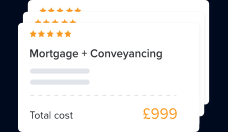
In the UK, 40% of employees currently live paycheck-to-paycheck. They don’t have any substantial savings and, if their pay is delayed or work dries up, they’re likely to struggle to pay their bills, including rental payments.
As a landlord, this presents a number of problems that are tricky to solve. One solution, though, is to bring in a flexible payment system for your tenants. With benefits on both sides, it’s the forward-thinking option for a changing workforce and a fluctuating economy.
Intrigued? Let’s take a closer look.
What Are Flexible Payment Systems?
Flexible rent collection involves offering multiple ways for your tenants to pay their rent. This includes the payment system itself, with options like online payments via easy payment links and traditional direct debits, as well as the time that you receive the rent money.
Whereas traditional agreements ask for a full payment at a set, pre-arranged date (usually at the start of the month), flexible systems enable the tenant to choose a schedule that suits their income cycle.
For example, your tenants might choose bi-weekly payments in accordance with their workplace, helping them to better manage their paychecks. Or, you might arrange a system in which as long as the payment is received by the end of the month, no late fees will be incurred.
Tenants who work sporadically (such as 3 months on and 3 months off) may even prefer paying upfront. This helps them to get their finances in order when they’re paid and reduces financial pressures during less profitable times of the year.
Flexible payment systems can be managed entirely through rent payment apps, too. If you don’t have the time to monitor flexible schedules, an app lets your tenants pick their dates and choose from multiple payment systems. They can then send a secure, direct rent payment to the landlord on time, following a schedule that keeps everyone happy.
Why Flexible Payments Are Increasingly Popular
Flexible payment systems balance the needs of landlords and tenants for a system that benefits both parties. But what’s causing their spike in popularity? To learn more, it’s smart to see the advantages from both sides.
Benefits for Tenants
Flexible payments provide tenants with some wiggle room when it comes to due dates. This is particularly useful for self-employed individuals or those who aren’t paid at the same time each month, helping them avoid late fees when the dates don’t align.
By giving tenants more control over matching their bills to their income cycles, flexible rent makes it easier to manage cash flow, too. This leads to better financial management, fewer late fees, and a lot less stress.
It’s important to note that all of these perks create a better, more positive rental experience. Flexible payment tech brings a frictionless, personalised touch to rental payments and an experience that boosts tenant autonomy.
The end result? Happier tenants who are more likely to stay put.
How Flexible Payments Benefit the Landlord
Flexible payments clearly make it easier for tenants to manage their rent bills, but how does this affect the landlord?
One of the main perks is less time spent chasing late fees. When payment schedules are set according to tenants rather than landlords, they’re fairly likelier to meet their payment obligations.
This means that you don’t have to call or chase up missing money, saving a lot of hours in admin and giving you more time to focus on the more exciting aspects of running a rental business.
You’ll also be setting yourself up for a regular income. With tenants who can better manage their finances according to their pay cycles, it’s more likely that you’ll receive your rent payments when they’re expected. This lets you better plan your own finances, creating a domino effect of good money management.
It’s good to note, too, that happier tenants lead to longer tenancies. When you show understanding and compassion towards financial situations, you’re likely to create a better relationship with your tenants and prolong the time they live in your property.
With fewer turnover costs and less frequent loss of income due to vacancies, you could see a boost to your yearly earnings.
How to Start Offering Flexible Payment Systems
Ready to start offering flexible rental payments for your tenant? Whether you have a community of rental properties or are just starting out with your first rental, here’s everything you need to know to get started.
Set Up Your Tech Systems
Before introducing flexible payments, you’ll need to choose the right tech. Some landlords are happy with an online payment tool and a spreadsheet, taking the DIY approach to monitoring payments. But if you’re looking for an easier approach to rental management, you can find flexible payment apps that streamline the process for you and your tenants.
These usually come with an intuitive interface that makes it easy for tenants to pick their payment schedules. Integrations with financial third parties also mean that the apps can process direct rent payments to the landlord, and handy notifications keep everyone in the loop for approaching due dates.
Talk to Your Tenants
If you have existing tenants, you need to let them know about the changes to your payment systems. Focus on the benefits of flexible payments, why you’re making the change, and how it’ll improve their rental experience.
For a smoother transition, keep your tenants up-to-date with tech tutorials, too. Most flexible payment software will have plenty of guidance available, helping beginners get to know the platform and how they can use it to make rent transactions simpler.
As the landlord, make sure you have time available to chat with any concerned tenants about the switch. Be available to answer questions and, if necessary, walk the tenant through the new system.
New tenants might not need as much help switching to a new payment system. But, to start on the right foot, it’s still a good idea to send over the same tutorials and guidance, as well as a quick explanation of how flexible payments will make their financial management easier.
Tenants Choose Payment Plans
After getting to grips with the tech, your tenants can choose a payment plan that suits their financial situation. You might include options such as bi-weekly and bi-monthly, as well as customisable schedules that give your tenants the freedom to choose when they pay.
For any tenants who might struggle with this process, it’s a good idea to walk them through the tech yourself.
Set Up Reminders
A big perk of flexible payment tech is that you don’t have to remind your tenants when their rent payments are due. By setting up automatic reminders, the platform you use will notify your tenants when their due dates are approaching, reducing late fees and saving you a lot of time.
Final Thoughts
As a landlord, you can improve the rental experience of your tenants and make management easy by offering flexible payment technology. Hopefully, this article has given you plenty of insight into whether it’s the right option for your rental properties.
For more property news and advice, be sure to join the Nethouseprices community and stay up-to-date with the British property market.




Make a comment